The Famous People
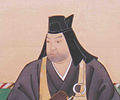
Yonezawa city Uesugi Museum
Born in 1530 in Echigo no Kuni (modern day Niigata) the second son of Nagao Tamekage. Given the birth name Torichiyo.
At age 15 he underwent the ceremony of manhood and in 1553 became the feudal lord of Echigo no Kuni.
In 1561 at the request of Uesugi Norimasa he became the head of the Uesugi clan.
Uesugi Kenshin’s skill as a war tactician and strength as a commander is recognized even today, and he is celebrated as one of the great leaders of the Warring States period..
In 1578 Uesugi Kenshin died at the age of only 49 and his preserved remains were later moved to Yonezawa from Aizu by Uesugi Kagekatsu. These remains were originally held within Yonezawa castle but after 1876 were moved to Uesugi Mausoleum. Even now Uesugi Kenshin’s grave is a pride of the people of Yonezawa.
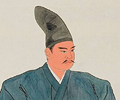
Kagekatsu was born the second son of Nagao Masakage in Echigo no Kuni (modern day Niigata) in 1555. He was the nephew of Uesugi Kenshin. After Masakage’s death, Kagekatsu was adopted by Kenshin in order to become his successor. He became the head of the Uesugi clan in 1579. Given his title by Toyotomi Hideyoshi, he became the Feudal Lord of wealthy domain of Aizu.
However after facing defeat at the battle of Sekigahara he was assigned to the considerably less wealthy Yonezawa as punishment. It is said that he refused to replace even one of his men, instead taking all who wished to come with him to Yonezawa. Kagekatsu came to live at Yonezawa Castle and along with his subordinate Naoe Kanetsugu quickly began new construction and started to address the financial destitution of the domain. He also became a supporter of the newly established Tokugawa Shogunate.
In 1623 Kagekatsu who had achieved many things as both a warrior and a ruler passed away in Yonezawa Castle at age 69. It is said that even Tokugawa Ieyasu has acknowledged Kagektsu’s excellence as an intellectual and as a warrior.
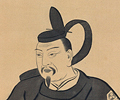
Yonezawa city Uesugi Museum
After suffering defeat at the battle of Sekigahara, Kanetsugu, was moved with Kagekatsu to Yonezawa. There, he worked to build up the town—at first with the aim to house Kagekatsu’s men. New construction at Yonezawa Castle, maintenance of the samurai and merchant housing districts, and improvements to the irrigation system are just some examples of what Kanetsugu managed to achieve in just a short time after arriving in Yonezawa. He also implemented of flood prevention systems, backed local industries, and created education incentives during his time in administrative power.
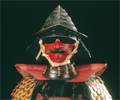
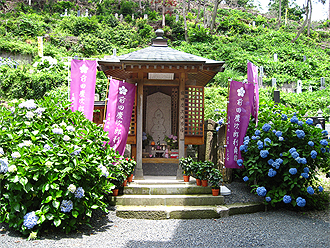
Maeda Keiji Memoria Tower
Located within the grounds is the ‘Maeda Keiji Memorial Tower’ where a memorial festival is held every year in June. Located nearby are the remains of the hermitage where Keiji spent his last years, as well as the spring which he would have used for drinking water (now named the Keiji-kiyomizu or 'Keiji Spring'. Other items related to Keiji’s life can also be found here.
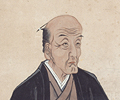
Yonezawa city Uesugi Museum
Yōzan was born the second son of Akizuki Tanemitsu in the domain of Takanabe (modern day Miyagi prefecture) in 1751. At age 10 he was adopted by Princess Kō, the daughter of Yonezawa’s 8th Feudal Lord Uesugi Shigesada. Yōzan became the head of the Uesugi clan at age 17 but by this time Yonezawa was in a great amount of debt that it seemingly could not escape from. In order to rescue the domain from its state of poverty Yōzan put into place laws regulating expenditure that maintained that the meals of the people should be simple and their clothes made of simple cotton. Additionally, he encouraged the expansion of agriculture as well as the cultivation of silk and mulberry trees. He also made it so the wives and children of warriors learned to weave, which led to the woven produce of Yonezawa’s Dewa being sold nationwide. Yonezawa’s textiles are still famous even to this day.
Yōzan is famous for being one of Japan’s most virtuous lords. An example of how Yōzan left behind his wisdom as a rule in his “Denkoku no Ji” address:
- The state is inherited from one’s ancestors and passed on to one’s descendants; it should not be administered selfishly.
- The people belong to the state; they should not be administered selfishly.
- The lord exists for the sake of the state and the people: the state and the people do not exist for the sake of the lord.
Just as these words indicate, Yōzan led a life dedicated to helping his people. In an opinion poll conducted by a leading Japanese newspaper in 2007, Yōzan took first place among past Japanese “ideal rulers.”
The 35th President of the United States of America, John F. Kennedy also referenced Yōzan stating that “Yōzan is a brilliant politician”. It was due to this reference that in autumn of 2014 that the U.S ambassador to Japan, Caroline Kennedy, visited Yonezawa.
Perhaps the most famous words left behind by Yōzan are: ‘To achieve, one must act. To not act is to not achieve; this is true in all things. The inability to achieve is the result of inaction.”
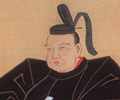
Sendai City Museum
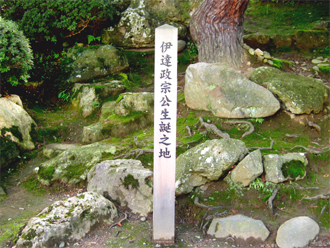
Date Masamune’s birth place.
